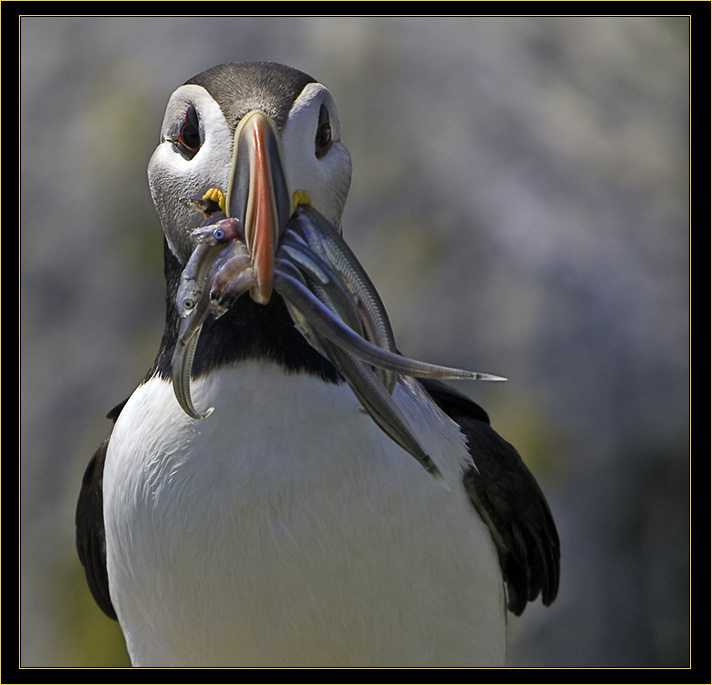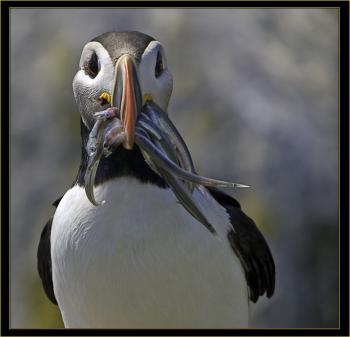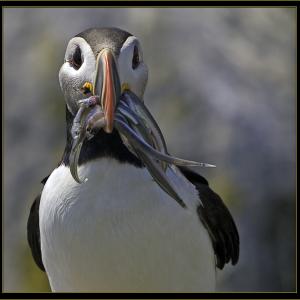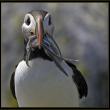Maine Birds on the Global Red List
In 1964 a coalition of concerned scientists established a new way of trying to assess the state of the world’s plants and animals. It was called the International Union for Conservation of Nature’s Red List of Threatened Species, often now just shortened to “The Red List.” Over time the criteria and process for listing species became more sophisticated and well-documented. BirdLife International, a coalition of more than 100 bird conservation organizations from around the world (National Audubon is the official U.S. Birdlife International representative) takes the lead in ensuring that the Red List for birds is updated every year.
The Red List is divided into a number of categories, from the ominous “Extinct” and only slightly less ominous “Extinct in the Wild” down through “Critically Endangered,” “Endangered,” “Vulnerable,” and “Near Threatened.” A species qualifies for a particular category if it has very low numbers or has shown rapid declines, all of which must be well-documented.
At the global level, the Red List has documented that one in eight bird species are now threatened and at risk of potential extinction, with 222 species listed as Critically Endangered. The U.S. (including Hawaii) has 29 extinct species and 92 globally threatened species (the top three endangerment categories) placing it 9th among all the countries of the world for the number of threatened species. An additional 52 species are listed as Near Threatened.
We have a surprising number of these birds that occur here in Maine either as breeders or as migrants or winterers: 19 globally threatened species and 30 Near Threatened species. The 2018 update of the Red List for birds includes some species that may come as a surprise to many readers. Perhaps the biggest surprise is the listing of common grackle as Near Threatened. For decades people have considered the common grackle to be one of the most abundant and common birds around, often amassing into enormous flocks during migration and winter (in the southern U.S.). But common species are often the ones we don’t notice when they start to disappear. Shocking as it may seem, common grackles have declined by about 50% since 1970!
Another familiar Maine bird that is now listed as globally Near Threatened is our beloved common eider. The listing is based on the fact that European populations have declined by nearly 50% over three decades and North American populations do not show any major increases (most are stable or declining).
Chimney swifts, those familiar chattering “flying cigars” that nest here in summer almost exclusively today in old chimneys of old houses are one of the insect-eating species that we have written about before that is now included among the globally threatened species on the Red List (officially listed as Vulnerable). The eastern whip-poor-will, another insect-eating summer bird that was once common in Maine and which has experienced severe declines, is now listed as Near Threatened.
Even the familiar Atlantic puffin is now on the Red List as Vulnerable, along with seabirds like the Leach’s Storm-Petrel and the black-legged kittiwake and birds that we think of as common wintering species along the Maine coast, the horned grebe and long-tailed duck. All of these are now considered among the globally threatened.
Maine is not immune to the global changes in biodiversity loss and environmental degradation that we sometimes imagine are happening only in far away places. But as we have written about in these pages before, there are lots of examples of positive solutions to these problems and we need as many people as possible working to make things better. We hope you are among them!
Jeffrey V. Wells, Ph.D., is a Fellow of the Cornell Lab of Ornithology. Dr. Wells is one of the nation's leading bird experts and conservation biologists and author of “Birder’s Conservation Handbook”. His grandfather, the late John Chase, was a columnist for the Boothbay Register for many years. Allison Childs Wells, formerly of the Cornell Lab of Ornithology, is a senior director at the Natural Resources Council of Maine, a nonprofit membership organization working statewide to protect the nature of Maine. Both are widely published natural history writers and are the authors of the book, “Maine’s Favorite Birds” and “Birds of Aruba, Bonaire, and Curaçao: A Site and Field Guide” from Cornell Press.
Event Date
Address
United States





























